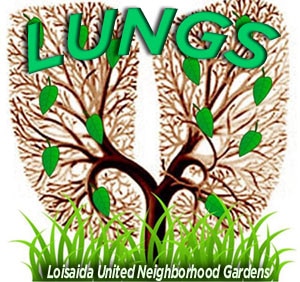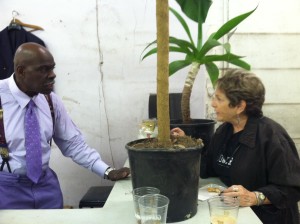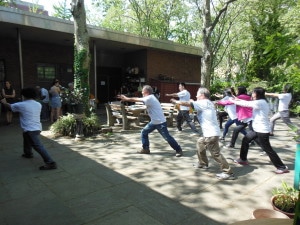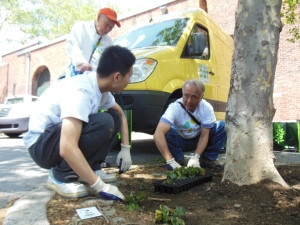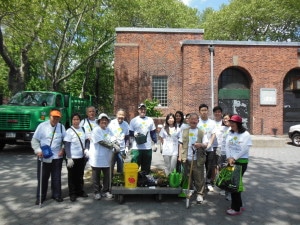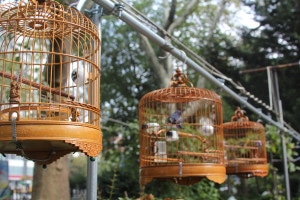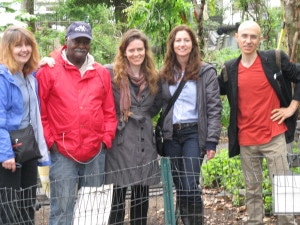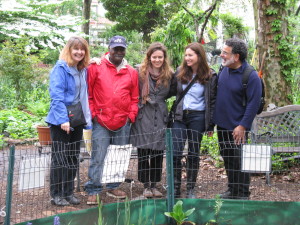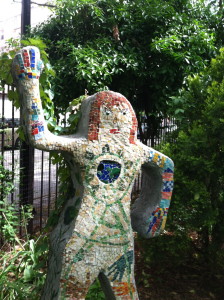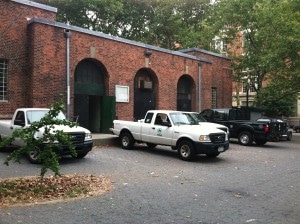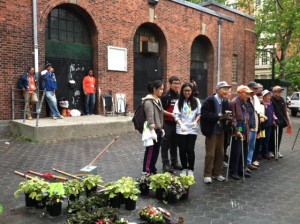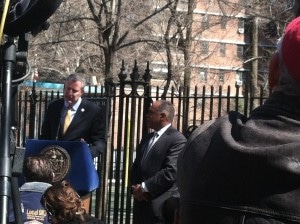LUNGS support for Community Garden in Coney Island and NYC Community Garden Coalition Fundraiser
Lungsters,
There are certain days when everything comes together. These are the days that define us; days that we will look back on as a turning point. This coming Tuesday, June 10th is such a day for the community garden movement in New York City.
In the morning at 9:30 the Brooklyn Supreme Court will hear arguments about the future of the Coney Island Boardwalk Garden which is being destroyed to make way for a music venue.
The project is dubious, it is being built with city funds on sand, literally, it’s in a flood plain. Sandy dumped two feet of sand on this 18 year-old garden. The gardeners dug out and replanted after the storm only to see their work bulldozed this past Christmas week by the developers.
The New York City Garden Coalition used their scant resources to file a law suit to fight the project. The briefs will be heard on Tuesday. It is imperative that a huge number of gardeners show up in court to show the judge there is real support behind the lawsuit. We need to have as many bodies there as possible –size matters here!
PACK THE COURT! Join Boardwalk Community Garden in their fight to regain their community space on Tuesday, June 10, 9:30 AM at the Brooklyn State Supreme Court (360 Adams Street, Courtroom 441). it’s in downtown Brooklyn!
For more information on this case, see http://nyccgc.org/2014/04/update-on-boardwalk-garden-court-case/?and
http://nyccgc.org/2014/01/ode-to-boardwalk-community-garden-from-karen-washington/
On Tuesday evening the NYC Community Garden Coalition(NYCCGC) – is holding their first fundraiser in many years at historic Judson Memorial Church, 55 Washington Square South
6:30PM-9:00PM
Get your ticket TODAY!KEYNOTE SPEAKER:
Helen Slottje, renowned environmental lawyer and recent winner of the prestigious Goldman Environmental Prize! Helen has worked with communities across New York to ban fracking and has committed to taking back local control of significant decisions that affect social and physical landscapes. More than 170 towns and cities throughout New York have passed local laws prohibiting fracking based on Slottje’s innovative legal framework, protecting our land, air, and water.Join NYCCGC as we recognize the achievements of community gardeners
and present awards to honor their work.
Honoree: Speaker of New York City Council, Melissa Mark-Viverito
Musical Guests: Diana Jones, Rashad Brown
We will have more news in the coming days and weeks on
additional activist honorees and special guests.
Your donation helps NYCCGC achieve our goal of making community gardens in all five boroughs permanent. A portion will go towards the defense fund of the 17-year-old Boardwalk Garden in Coney Island to help restore this landmark garden bulldozed by a developer.
Please come out and support the gardens on Tuesday, June 10th , we need to stand together.

